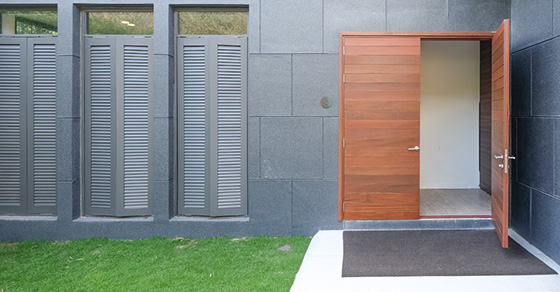Within the last few years, Window and Door manufacturers and installers in North America have become some of the most competitive businesses when it comes to Search Engine Marketing. Many Window and Door companies prefer to target locally, and thus find themselves in competition with the other companies in the same area. For Search Engine Marketing (SEM), Google Ads is the preferred platform for these companies to do search ads – the ones that appear at the top of search results.
Using Google Ads, virtually anyone has the ability to pay for top positions on Google’s search results page.
The Window and Door industry is unique in that only a small percentage have adopted online marketing into their budget, however competition is growing. This indicates there is likely tremendous return on investment, and still an opportunity for a competitive advantage over those who have not taken up online marketing strategies.
Through AdLuge, we have been able to use industry average data to help Window and Door manufacturers and installers understand what should be expected out of paid search campaigns.
Search Engine Marketing isn’t slowing down. Being Google’s largest source of revenue, it can be anticipated that more focus will be placed on this service year over year. It’s success and continued growth is attributed to demonstrated results and return on investment for millions of Google Ads campaigns each month.
The below data represents averages for 17 Window and Door companies that currently use the AdLuge Marketing Intelligence tool.
Google Ads Industry Averages
The following article outlines the average Google Ads paid search metrics from October, 2013. This data has been compared to paid search account data from July, four months earlier.
Although many variables can affect each campaign, this information is valuable in helping the your industry evaluate the performance of Google Ads campaigns. Comparing your performance to competitors and others within your industry can help determine whether there is need for improvement in your strategy.
Campaign Spend
The average Window and Door company spent $1,354 in October. This is up from $1,188 in July. As you will see in this article, the increased budget resulted in more clicks, more conversions, and an overall lower cost per conversion. Typically budgets increase with competition, along with the cost per conversion. This is a unique situation in which the opposite is seen as the ads performed better, likely due to campaign refinement and an increase in impression share which we will discuss later. This does hint at a lack of competition within the industry.
Clicks
The average Google Ads campaign got 231 clicks in October, up highly from 197 in July. It is important to note that many Window and Door companies measured through AdLuge tracking have a very targeted search marketing strategy. Location and service areas are the basis of the targeting strategy, so there is often only a limited amount of clicks that can be gathered. The average Cost Per Click (CPC) went down from $6.03 to $5.86. Although these are both relatively CPC’s, the decrease in click cost after four months is an indication opportunity, as competition is not continually driving up costs as aggressive as other industries. This is likely due to other competitors reaching their monthly budget too quickly. If there is less competition on the bid, you will pay less per click.
Conversions
The average Google Ads search campaign garnered an average 12 form submissions or phone leads during the month of October, up respectively from an average of 8 in July. Based on budgets, this means the average Cost-Per-Lead (CPL) was around $112 per lead. In July, the average Window and Door company saw a CPL of $148. Incredible value is being seen within this industry, regardless of the month.
Figuring out the long-term monetary value of a customer will help determine an acceptable CPL threshold.
Impression Share
Impression Share refers to the percentage at which your ads are being served up compared to others targeting the same audience. The average impression share for all campaigns was an average of 60% in October. This is a healthy indication of lack of competition within the geographic regions the Window and Door companies are targeting. Lower impression share is sometimes a result of budget restrictions, however it is easy to see that compared to July with an average impression share of 57%, the Window and Door industry remains fairly open. Strong competition is often a factor in impression share, as they are competing for the same target audience, and same ad space. Whenever possible, we recommend to do your best to maximize impression share without compromising your Cost-Per-Conversion. This may require some trial and error over a few months.



Nice article. Would be interesting to see the fluctuations in quarters rather than just months. Still a strong writeup for anyone in the window and door instustry none the less!
Great article! One of the best kinds of PPC ads available today are Google’s remarketing display ads. What’s great about them is that you can segment them by behavior, so if people have been to your home page but not your sales page, you can direct them there. If people land on your shopping cart but don’t buy, you can run ads to send them back to the shopping cart and complete checkout. The power to segment is one of the most powerful advancements in marketing technology in the past century. I didn’t know this when I started but I called Simon (302-401-4478) and I got help. Now I make 22.37% more on my display advertising than I did before and I’ve been selling a lot more product.